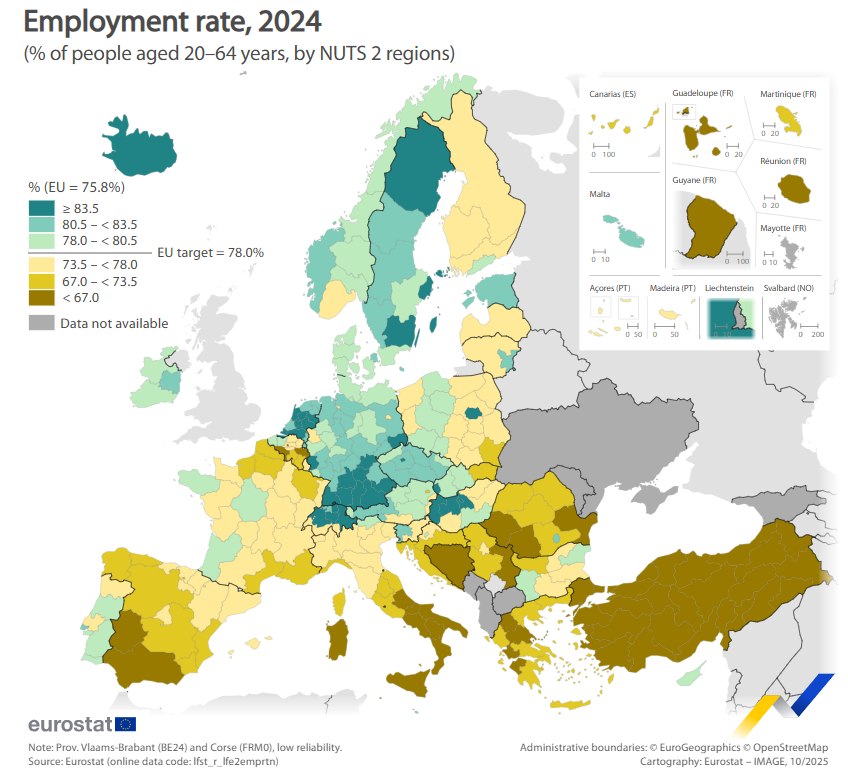Most Portuguese regions have already surpassed the European target for the employment rate (78%), according to data released by Eurostat.
The North, West, and Tagus Valley are, however, still a few points away from the target set for 2030, within the scope of the action plan for the European Pillar of Social Rights.
According to the statistical note, in 2024, the European Union (EU) employment rate was 75.8%, a record high, but below the aforementioned target (by 2.2 percentage points).
However, among the regions that make up the various Member States, almost half (46.5% or 113 of 243 regions) have already reached or even exceeded the aforementioned 78% mark.
In Portugal, for example, the Center (78.5%), Greater Lisbon (81.1%), the Setúbal Peninsula (78.8%), Alentejo (79.7%), and Algarve (79.8%) are in this situation. The North (77.4%) and the West and Tagus Valley (76.7%) are still below the European target.
According to Eurostat, among the 113 regions that have already met or exceeded the target, there is a high concentration in the Czech Republic (all eight regions are above the target), Denmark (all five regions), Germany (35 of 38 regions), Ireland (all three regions), the Netherlands (all 12 regions), Slovakia (three of four regions), and Sweden (all eight regions).

In contrast, the statistics office notes that 65 of the 243 regions for which data are available recorded employment rates below 73.5%.
"Many of the regions with relatively low employment rates are rural, sparsely populated, or peripheral. This pattern is particularly evident in the southern regions of Spain and Italy, as well as in Greece and some areas of Romania and France," states Eurostat.
Industrial regions that have been unable to adapt to market changes are also among those with lower employment rates, the statistics office highlights.














